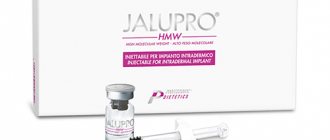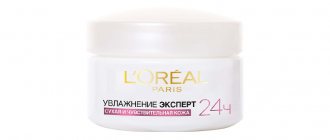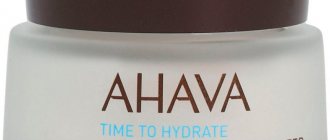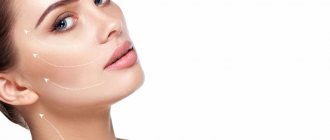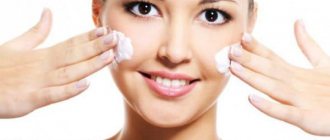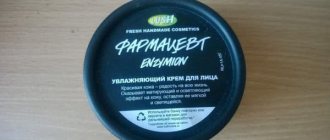Why is he dangerous?
In fact, this synthetic chemical is completely safe for the skin. This has been proven by numerous tests and inspections. This means you can buy a cream that contains this substance.
Hydrogenated polydecene is non-comedogenic and does not cause eye or skin irritation. It is often used not only in adult cosmetics, but also in care products for children in their first year of life.
It can often be found in sunscreen, as well as in shampoos and masks, which are recognized to prevent hair loss and restore its structure.
The chemical is not carcinogenic, not dangerous during pregnancy, and completely hypoallergenic.
Use of phospholipids in cosmetics
The most common type of phospholipid in the tissues of animals and plants is phosphatidylcholine (lecithin), which consists of structural residues of phosphoric acid, choline, fatty acids, and glycerol (Figure 1). Lecithin is also the main phospholipid used in cosmetic formulations.
Cosmetic lecithin is described as a mixture of phospholipids that consists primarily of phosphatidylcholine, but may also include components such as fatty acids, triglycerides, sterols, hydrocarbons and glycolipids. Lecithins can be fractionated by phosphatidylcholine content, ranging from "crude" lecithin, containing about 15% phosphatidylcholine and a significant amount of the vegetable oil from which the lecithin was obtained, to skim or fractionated lecithin, containing 25 to 96% phosphatidylcholine.
Sources of lecithin for industry can be soybeans, eggs, milk, raw materials of marine origin, rapeseed, cotton and sunflower. The fatty acid composition of isolated phospholipids is typical for each specific type of raw material and determines the temperature at which fatty acids change their mobility.
Below a point called the “gel-to-liquid crystalline transition temperature,” the fatty acids are in a rigid gel form. Above this temperature value they are mobile and are in liquid crystalline or liquid form. Phospholipids containing polyunsaturated fatty acids are characterized by a very low (below 00C) transition temperature.
This means that at a temperature of 220C, these lipids are in liquid crystalline form and, upon contact with water, form very mobile structures - liposomes. Phospholipids containing unsaturated fatty acids can be converted to phospholipids containing saturated fatty acids as a result of hydrogenation.
Such hydrogenated phospholipids are in a gel state at skin temperature and tend to form more rigid and stable membrane-like structures. Recently, mainly soy lecithin or lecithin obtained from other plant materials (rapeseed, sunflower) have been used in cosmetics. There is also a tendency to use lecithin that is not derived from genetically modified soybeans.
Lecithin and its derivatives have the following properties useful in cosmetics [2]:
- emulsification and solubilization
- humidification
- improving barrier function, stimulating the synthesis of ceramides in the skin
- reduction of skin irritation
- reduction in pore size
- reduction of hyperkeratosis
- stimulation of cell proliferation
- increasing the active penetration of other active ingredients into the skin
- hair conditioning supplements
- formation of liposomes and active delivery of active substances
- increased deposition of cationic dyes onto hair.
The Russian market includes both the world's leading lecithin suppliers and Russian manufacturers. The main consumption of lecithin in Russia is the food industry (more than 95%). The leaders in terms of volumes of lecithin imported to Russia are the ADM company - 46% of total imports, Cargrill (13.4%), etc.
Why is it needed?
The main action is a synthetic cleansing oil. It is necessary so that the main components of the cream are more evenly distributed over the skin. It also helps natural plant substances, which are often added to the cream, penetrate into the deepest layers.
We can say that this is a kind of transport substance that helps other substances work not only on the surface, but also in the deeper layers of the epidermis.
In addition, this chemical is completely inert and does not interact with one or another component of cosmetics.
Prospects for the Russian lecithin market and lecithin production in Russia
There are good prospects for the development of domestic production of lecithin in Russia. What is important in the case of soy products is that we are talking about non-GMO products. Thus, in 2009, three factories were launched that began producing domestic soy lecithin: Sodruzhestvo Soya (Kaliningrad), Amuragrotsentr (Blagoveshchensk), Kubanagroprod (Tbilisskaya village, Krasnodar region). These plants have installed modern foreign-made equipment, allowing
obtain lecithin, the quality of which is not inferior to imported ones. The planned capacity of three new lecithin production facilities is quite impressive and amounts to more than 4.5 thousand tons per year, which is comparable to the volume of lecithin imports in 2008 [3]. In 2020, it is planned to launch lecithin production in the Altai Territory at the AgroSib-Razdolye enterprise. Thus, the prerequisites have been created for the gradual replacement of imported lecithin with a competitive and high-quality domestic product.
According to export forecasts, the potential of the Russian lecithin market is very large. With the active introduction of lecithin into the food, pharmaceutical and cosmetic industries, as well as the spread of lecithin for technical use, the total consumption of lecithin may increase several times. According to expert estimates, lecithin consumption by the food industry may increase 3 times to 15 thousand tons.
Considering the American and European experience in the technical use of lecithin, the actual potential for growth in lecithin consumption in Russia is much higher. Experts predict that the development of the Russian market will occur along with its structural change. On the one hand, it is obvious that imported lecithins are gradually being replaced by domestic analogues.
On the other hand, we can expect a change in the proportions of GMO and non-GMO lecithins on the Russian market with a significant increase in the share of non-GMO both domestic and imported lecithins. Moreover, the further development of domestic production of lecithin can reorient Russia from imports to partial exports of this product.
Where is it found?
We learned what hydrogenated polydecene is and why it is needed in cosmetics. Now it remains to understand what creams and other care products it is found in.
- NIVEA – lip balm “Basic care”.
- CLEARSKIN – toning scrub for deep cleansing of pores.
- HEAD AND SHOULDERS – anti-dandruff shampoo.
- VITEX – peeling mask with thermal water.
- MAMA COMFORT – breast skin care gel.
- Aloe Vera face cream-gel from Oriflame.
Drawing conclusions, I would like to say that this substance is completely safe and buying a cream or other cosmetics that contains hydrogenated polydecene is not dangerous.
note
In cosmetics, along with completely harmless chemical components, real “monsters” can also be found. For example, the most dangerous substances for the skin today are recognized as:
- Isopropyl isostearate (isopropyl stearate).
- Isopropyl myristate.
Both of them are highly comedogenic and are not recommended for use on young, and especially problem, skin.
Chemical structure and properties of phospholipids
- gives skin smoothness;
- improves general condition;
- provides better “breathing” of the skin;
- softens and relaxes the skin;
- delivers useful assets to the dermis;
- relieves skin irritation;
- has a calming effect on inflammation;
- prevents the appearance of wrinkles;
- promotes cell regeneration;
- has an antioxidant effect.
Lecithin is an easy-to-use and useful ingredient in cosmetic formulations with a “green” safety certificate, which has already become a mandatory component for premium cosmetics. We offer high-quality soy lecithin, which is manufactured in Germany in compliance with all standards and technologies, the physical and chemical characteristics of which meet European standards.
Lecithin or phosphatidylcholine is a natural substance that is present in a number of foods and from them enters our body: eggs, sunflower seeds, soybeans, mustard seeds, etc. Lecithin and phosphatidylcholine are not entirely identical concepts, but essentially phosphatidylcholine is the active component of lecithin, which determines its cosmetic effect. Therefore, in cosmetology you can often find the term “phosphatidylcholine”.
Phosphatidylcholine belongs to phospholipids, which are very important components of cell membranes, the integrity of which is necessary for the normal functioning of skin cells. During the aging process, membranes weaken and lose their strength and shape, causing the skin to lose elasticity, strength, firmness, and most importantly, its protective barrier functions of resisting external harmful environmental factors and the internal destructive action of free radicals.
Massive disruption of the integrity of cell membranes leads to rapid chronological aging and the skin quickly loses its natural color and texture, and is more prone to pigmentation, sagging, sagging, and inflammatory processes. In such a situation, lecithin is a substance that itself has a beneficial effect on the restoration of skin cell membranes and promotes the inclusion of other nutrient regenerating substances to “repair” skin cells.
Lecithin in cosmetics is a “green” emulsifier using a cold method for preparing an emulsion, i.e. a thickener that binds components and imparts viscosity, therefore there is nothing complicated in enriching cosmetics with phosphatidylcholine;
Lecithin is a reparant, i.e. recovery agent;
Lecithin is an emollient, i.e. a component that softens and relaxes the skin;
Lecithin is a component that ensures cell communication, i.e. is a carrier, promotes the delivery of other beneficial substances to the cells of the epidermis and dermis.
Soy lecithin is not only and not entirely a cosmetic ingredient; its use is much wider. Thus, the food industry widely uses lecithin in the production of margarines, instant drinks, chocolate, etc.
In cosmetics, lecithin is simultaneously used as a thickener and softener and as a means of transporting cosmetic actives.
From a chemical point of view, phospholipids are esters of polyhydric alcohols and higher fatty acids, which contain a phosphoric acid residue and an additional group of atoms of various chemical nature connected to it, for example, choline in the case of phosphatidylcholine or ethanolamine in the case of phosphatidylethanolamine.
Depending on which polyhydric alcohol underlies the structure of the phospholipid, glycerophospholipids (based on glycerol), phosphosphingolipids (based on sphingosine) and phosphoinositides (based on inositol) are distinguished. The most common glycerophospholipids in nature are phosphatidylcholine (Fig. 1), which is the main lipid of cell membranes.
Figure 1. Chemical formula and molecular model of phosphatidylcholine
All glycerophospholipids are built according to a single plan, and their molecules are sterically consistent with each other. At the same time, the huge diversity of phospholipids is provided by the variety of fatty acids that make up their molecules. Thus, there are several dozen natural types of phosphatidylcholine (Fig. 2).
Figure 2. Amphiphilic structure of the phospholipid molecule
Due to their chemical structure, phospholipids are amphiphilic molecules. The polar “head” consists of glycerol (or other polyhydric alcohol), a negatively charged phosphoric acid residue and a group of atoms attached to it, often carrying a positive charge. Nonpolar tails are fatty acid residues attached to a polyhydric alcohol by ester bonds (Figure 2).
In the case of lysophospholipids (monoacyl phospholipids), only one fatty acid is attached to the glycerol residue, in this case the phospholipid molecule has a cone shape and can form micelles in an aqueous solution (Fig. 3). If the formation of an ester bond occurs along the two hydroxyl groups of glycerol, a diacylphospholipid is formed containing the residues of two fatty acid molecules.
The diacylphospholipid molecule has the shape of a cylinder and in an aqueous solution forms lamellar bilayers in which the hydrophobic tails are oriented inside the layer, and the hydrophilic heads are oriented outside (Fig. 3). Thanks to this property, phospholipids are able to form biological membranes (lipid bilayer), liposomes and lamellar emulsions.
In these emulsions, phospholipids form bilayers that surround and stabilize the oil droplets. This structure allows you to increase the amount of oils and other lipids in the emulsion, reduce the concentration of other emulsifiers, and the presence of an aqueous phase allows you to include water-soluble biologically active substances in the products.
Figure 3
Phospholipids are essential substances that are indispensable for humans. They are not produced in sufficient quantities in the body and must be obtained from food. Their most important function is direct participation in the construction of cell membranes. According to recent studies, most people do not receive up to 40% of the required phospholipids.
Being essential components of the biological membranes of all living cells, phospholipids are non-toxic and very well accepted by the skin.


